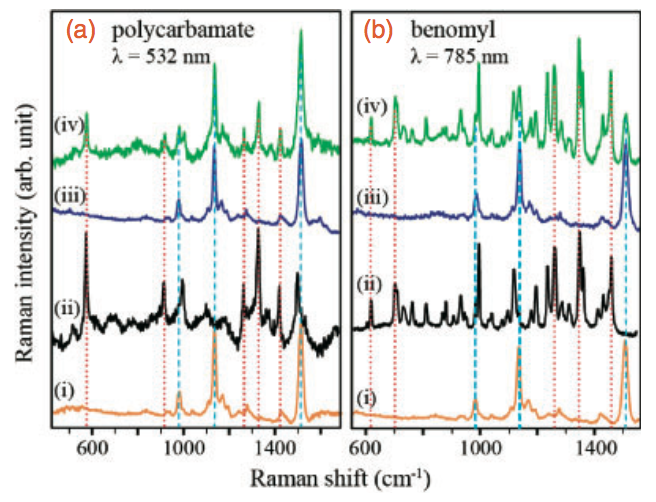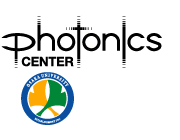【研究成果】2016年-
研究成果102
High-sensitivity pesticide detection using particle-enhanced resonant Raman scattering
Bikas Ranjan, Yuika Saito & Prabhat Verma
Applied Physics Express 9, 032401 (2016) | DOI: 10.7567/APEX.9.032401
A small residual of pesticide on food can be harmful. It is great important to develop a robust technique to detect tiny amounts of pesticides. Here, particle-enhanced resonant Raman spectroscopy was newly proposed to detect extremely low concentrations of pesticides, where gold nanoparticles of desired plasmonic resonance are synthesized to match the resonance in Raman scattering. The detection of extremely low amounts of pesticides on oranges was successfully demonstrated.

Detection of extremely small amounts of (a) polycarbamate and (b) benomyl pesticides on orange through PERRS (ex λ = 532 & 785 nm) Spectra (i) from clean oranges, spectra (ii) from pure pesticides. Red dotted and cyan dashed vertical lines indicate prominent Raman modes from pesticides and oranges. Spectra (iii) resonant Raman scattering from oranges after a small amount of pesticide was dropped onto it and then washed off with water. These spectra show only citrus peaks; no pesticide could be detected. Spectra (iv) were taken after dropping small amounts of (a) GNSs and (b) GNRs. Raman modes from pesticides were strongly enhanced, and modes associated to both citrus and pesticides could be observed.



